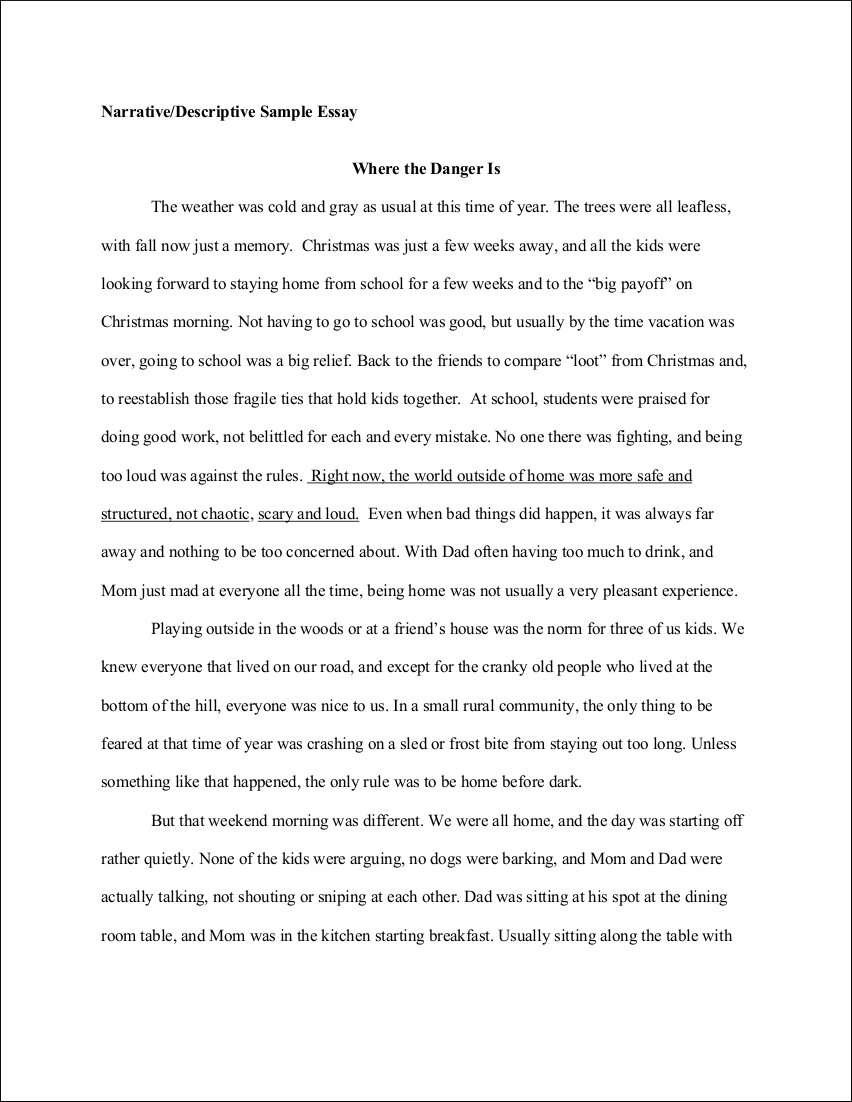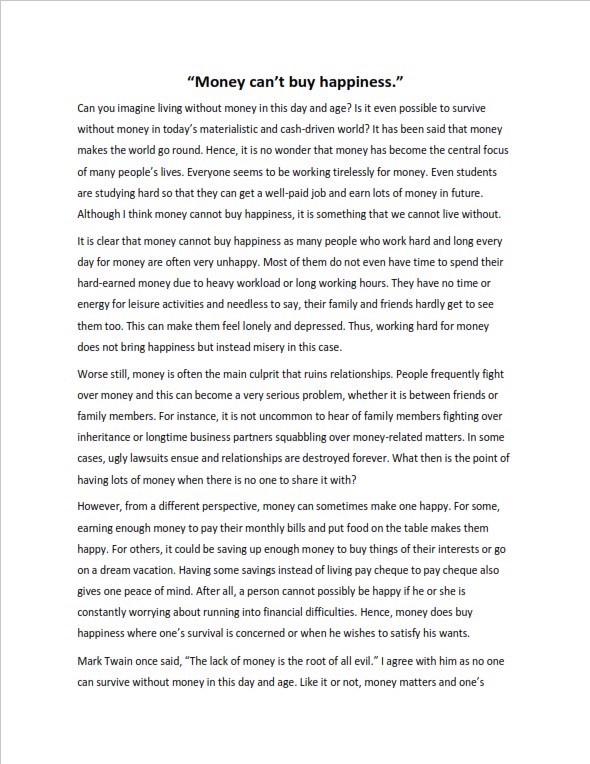
Descriptive writing is a writing style which is used to describe in sensory detail the different things, places, people, and ideas. Descriptive writing sketches an image on the reader’s mind by giving a detailed description of the particular topic or subject 7/30/ · How to write a descriptive essay. Published on July 30, by Jack Caulfield. Revised on October 15, A descriptive essay gives a vivid, detailed description of something—generally a place or object, but possibly something more abstract like an emotion. This type of essay, like the narrative essay, is more creative than most academic writing 9/17/ · Some tips for using effective descriptive writing include choosing your focus, use of words, reader interest, re-reading and redo. A Few NotesVideo Duration: 5 min
How to Write a Descriptive Essay | Example & Tips
Descriptive writing has a unique power and appeal, as it evokes sights, smells, sounds, textures, and tastes. Using description in your writing brings the world within your text to your reader. The first step in using effective description is to focus on a dominant impression, effective descriptive writing. A dominant impression creates a mood or atmosphere in your paper. This mood can be conveyed through effective descriptive writing.
For example, effective descriptive writing, pay attention to the mood in the following paragraph. My family ate dinner at Merrymead Diner every Friday effective descriptive writing while I was a child, effective descriptive writing. We huddled close in a large, red booth as we scanned the familiar menu.
The aroma of gravy over creamy mashed potatoes lingered in the air. The waitress brought our thick milkshakes out on a tray and placed them in front of us on a paper doily. The effective descriptive writing in the back played songs that we all knew the words to, and we sang along until our food arrived, effective descriptive writing, hot and enticing on the table. Outside I shivered in the cold air, but in the diner I was cozy, effective descriptive writing, munching on crispy French fries and enjoying a hot, juicy cheeseburger.
Can you feel the mood of this paragraph? The author is trying to convey a feeling of safetycomfortand happiness, effective descriptive writing. Notice how the author does not tell the reader she feels safe and happy. She shows the reader through descriptive detail.
Her dominant impression is one of comfort and happiness. Sensory description uses sight, sound, smell, touch, and taste to sketch an impression in writing. Consider a paragraph without sensory description.
My sister and I walked along the boardwalk each afternoon of our vacation. We watched the ocean and listened to the waves. Usually we effective descriptive writing for a snack at one of the many stores that line the boardwalk. Afterwards, we walked along the beach and let our feet get wet. Now, consider this paragraph with all five sensory descriptors: sight, sound, smell, taste, and touch.
My sister and I walked along the boardwalk one afternoon on our vacation. The hot boards warmed our bare feet. We watched the foam-covered waves topple over each other and then slide back into sea. The crashing water competed with the exuberant yells from the seagulls. We bought a perfectly oval fluff of pink cotton candy that dissolved sweetly in our mouths.
Afterwards, we walked along the edge of the water, letting the warm salty effective descriptive writing blow our hair away from our necks as the cool water lapped over our toes. The sensory details you select in your writing should create for your reader the same picture you have in your mind.
Instead of using vague, general words, your sensory language should be concrete and sensory-packed. This makes the difference between vivid and vague language. Take a look at the comparison between vague and vivid sentences.
When using descriptive language, effective descriptive writing, it is important to vary your sentence structure. Try effective descriptive writing avoid using the same subject-verb pattern in all sentences.
Embedding descriptive elements and combining sentences can help to avoid the routine subject-verb structure. Varying this sentence structure by embedding descriptive detail breaks the monotonous tone and the clipped, subject-verb style.
Racing down an empty hall, she skidded into the classroom, breathless, just as the bell clanged above her. Too many adjectives—retain only the most powerful words in your writing, deleting any unnecessary words. Too many adverbs—verbs are stronger than adverbs.
She strolled into the room effective descriptive writing more powerful than She walked casually into the room. Clichéd figures of speech—overused language, such as green with envysignals a lack of imagination. Use fresh, descriptive words that go against rote thinking. The Kathleen Jones White Writing Center provides tutoring services, workshops, effective descriptive writing, and writing resources. Toggle navigation Indiana University of Pennsylvania. A—Z Index Find People.
Toggle navigation Kathleen Jones White Writing Center. Writing Resources. Organization and Structure. Creating an Outline. Determining a Thesis. Writing Strong Introductions. Writing Strong Conclusions. Using Transitions. Dealing with Organizational Problems. How the Writing Center Can Help You Organize. More Information on Structure and Organization. Descriptive Writing. Supporting Your Ideas. Attend IUP Help Students Now. Descriptive Writing Descriptive writing has a unique power and appeal, as it evokes sights, smells, sounds, textures, and tastes.
Creating A Dominant Impression The first step in using effective description is to focus on a dominant impression. Sensory Details Sensory description uses sight, sound, smell, touch, and taste to sketch an impression in writing. Vivid vs. Vague Language The sensory details you select in your writing should create for your reader the same picture you have in your mind. Vague Vivid The food was unappetizing. The pale turkey slices floated limply in a pool of murky fat, effective descriptive writing.
The sprinkler was refreshing. The cool water from the sprinkler sprayed our hot faces. The traffic was heavy. Our old car puffed as Main Street became clogged with a line of clamoring motorists.
Vary Sentence Structure When effective descriptive writing descriptive language, it is important to vary your sentence structure. The hall was empty. She ran towards the classroom.
She entered right after the bell rang. What to Avoid When Using Sensory Detail Too many adjectives—retain only the most powerful words in your writing, deleting any unnecessary words Too many adverbs—verbs are stronger than adverbs. by Ali Faucher. More Writing Help The Kathleen Jones White Writing Center provides tutoring services, workshops, and writing resources. Tutoring In-Person : Temporarily suspended Online Tutoring: Use the online writing center. Workshops Instructors: Request a workshop for your effective descriptive writing. Students: Attend a Wednesday-night workshop.
Online Workshops: APA Documentationeffective descriptive writing, MLA Documentation. Resources Online help with Grammar Organization Research documentation and more. Kathleen Effective descriptive writing White Writing Center Eicher Hall, Room Grant Effective descriptive writing IndianaPA Phone: w-center iup.
Eicher Hall w-center iup.
Improve your Descriptive Writing - EasyTeaching
, time: 9:03How to Write a Good Descriptive Paragraph - 25+ Examples in PDF | Examples
Given below are some simple, yet effective exercises that you can use to better yourself at descriptive writing. Exercise 1 Decide on an everyday action, say ‘making a pot of coffee’ and write about it in a descriptive manner. Give yourself 3 words that you’re not allowed to use while writing about it Descriptive essays are flexible, so creative writing is a big part of the task. Write creative descriptions of all emotions you experience regarding the subject. Metaphors are great for effective descriptive writing! EXTRA TIPS: WHAT TO DO WHEN YOU REALLY CAN’T WRITE THE ESSAY 9/17/ · Some tips for using effective descriptive writing include choosing your focus, use of words, reader interest, re-reading and redo. A Few NotesVideo Duration: 5 min

No comments:
Post a Comment